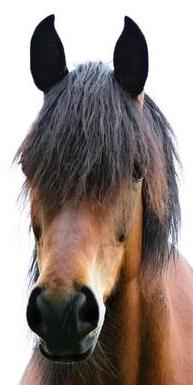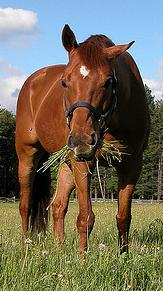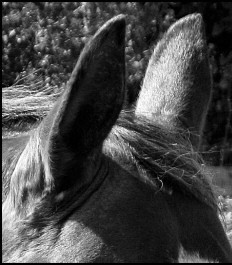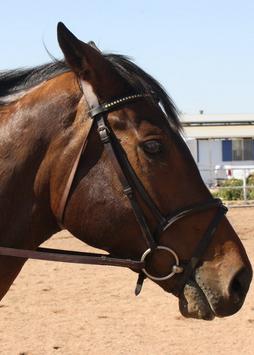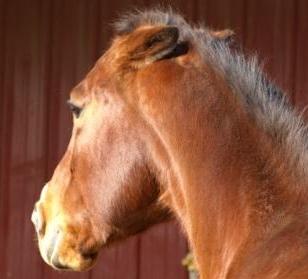To be a good horseperson you have to learn to listen to your horse. Horses are very good at communicating with us, if we know what to look for. Body language is the main way your horse talks to you, so you need to understand it to be able to respond. In this post, we will look at some of the ways that a horse uses his ears to tell us how he is feeling.
Alert and Erect
Ears which are forward and pricked upright, as shown above, indicated a horse who is focused and aware of his surroundings. He is ready to react to whatever comes his way, or whatever he thinks is coming his way. If your horse is this focused on something, it might be difficult to divert his attention. Try to turn him elsewhere or give him a job to do if he seems to be getting tense. When your horse is alert, you must be as well because you don’t know how he might react to whatever has his attention.
Relaxed
Here is a horse who is completely at ease with his surroundings. He is aware of what is going on around him, but is content to simply munch his grass. When you view a horse whose ears are a little floppy, you’re viewing a horse who is comfortable with his environment and whatever is going on around him. This is something that I love to see when I ride, because I feel like my horse and I are truly connected. If my horse is relaxed enough around me to let his ears flop a little, I feel that true trust has been established between us. One thing to be aware of when your horse has his ears relaxed is that he might be napping. If he’s by himself and seems relaxed, make sure you talk to him to let him know you’re there so he doesn’t get spooked or taken unaware when you get to him!
Attentive
These are ears which are attentive to what is going on, but in a way in which will keep the horse responsive to you as well. Unlike the alert ears in the first example, this is something you will see when a horse is focused on you. Often times, if you talk to your horse from the saddle, or as you walk along beside him, you will see one or both of his ears twitch in your direction. It is good to see him respond to you like this. Its a good way to know you have his attention.
Unhappy
When ears start to tilt backwards, you’re getting into unhappy behavior. Sometimes your horse will give you a warning that he is uncomfortable or unhappy with an action. You may also see his ears twitch rapidly back and forth which could be a sign of uneasiness or tension. Pay close attention to ears that start to go back and adjust what you are doing or stop altogether and do something new. If ignored, this signal could lead to more aggressive behavior, like biting or kicking.
ANGRY!
Beware of a horse who has his ears pinned! This is an aggressive behavior which is often the precursor of a bite, kick or charge. Pinned ears equal an angry horse. Stop whatever action you are doing immediately and if he does not calm down, get out of his way. If you are riding and he has his ears pinned, he may be showing signs of pain, if the action doesn’t cease when you change your activity. Check to make sure there is nothing poking him from your tack, make sure everything fits him properly and if he’s still pinning his ears, have a vet out to check him over — he might have back pain or something else causing him discomfort.

